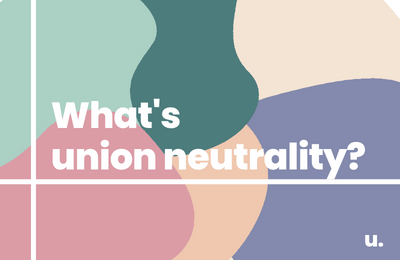Union neutrality is a promise made by management not to interfere during an organizing drive. It typically creates a more collaborative, less expensive, and less time-consuming unionizing and negotiations process.

CEOs and Directors essentially have three overarching options when faced with a unionizing campaign.
- Remain neutral and allow workers to collectively decide if and how they want to exercise their right to unionize.
- Speak and act in favor of unionization. Note that management isn’t legally allowed to assist, pressure or incentivize workers regarding unionization.
- Actively oppose unionization. Unfortunately, this is the most common route in the United States as employers collectively waste millions of dollars a year on legal fees to prevent unionization - often using bad-faith tactics. Remember that lawyers and consultants make orders of magnitude more in fees when companies fight unions vs. staying neutral.
So, what does union neutrality look like?
It can take the form of a pledge from or formal agreement with management. Several large companies have undertaken such oaths in the past: AT&T, UPS, US Steel, and most recently Microsoft. If it’s a signed agreement between management and unionizing workers, it’s helpful to commit to a transparent pathway toward formalizing recognition.
Employers can agree to accept union authorization cards signed by a majority of eligible staff as a means of winning recognition. This can save both parties time and money. This process is called a card check, and allows you to skip past some of the lengthy deliberations associated with a National Labor Relations Board (NLRB) election.
Here are some examples of what union neutrality agreement language can look like.
What doesn’t union neutrality mean?
It doesn’t mean that management will actively support the campaign. It also doesn’t guarantee a smooth negotiation process.
Union neutrality cannot replace collective action. While neutrality can be a sign of a ready and willing boss who’s open to a dialogue, the bottom line is that it's up to the workers to decide what conditions to fight for and what they’re willing to do to win. Remember: workers know their workplace better than anyone else.
How do I remain neutral as an employer?
Great choice. If you do what’s best for your workers, they’ll do what’s best for you.



